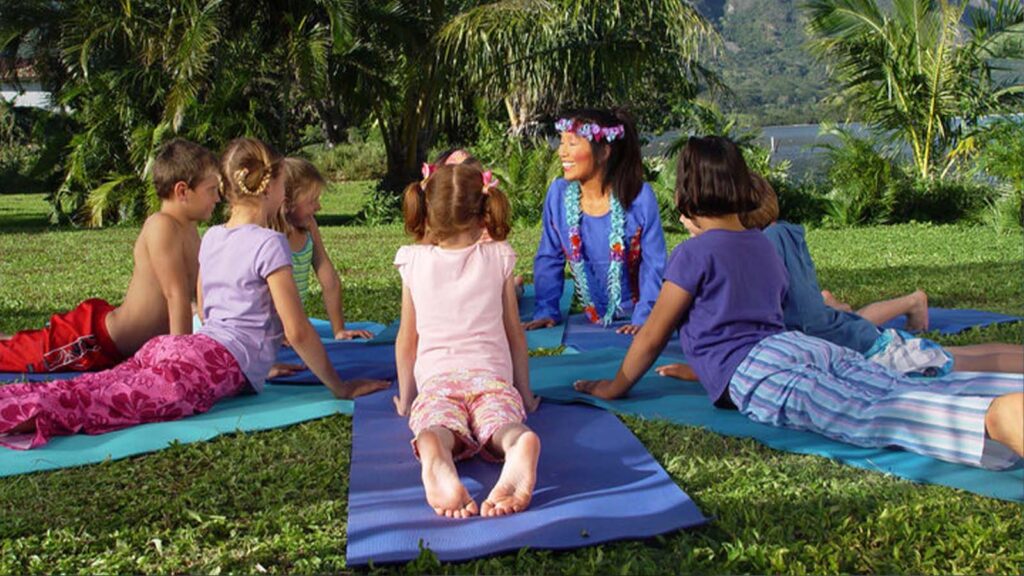If you practice yoga asanas and you have small children, the chances are they are “playing yoga” with you. If you’re wondering how to keep them practicing as they grow and develop, here are some hints:
From the age of three or four, we can encourage kids to do simple, playful yoga poses. Kids at this age have fun with exercises like Cat & Dog Stretch, Lion, Rocking Beetle, and Cobra that invoke their imaginations while being gentle on their growing bodies (these are all on my Little Yogis DVDs). They enjoy the challenge of trying to balance on one leg in poses like Tree. Focus on making it fun by making animal noises with them, for example, or having them wave their arms and fingers like the leaves and branches of a tree. At this age, they will be easily distracted, so don’t expect them to hold the poses too long—move fairly quickly from one to another. Repeat the same poses often—they’ll enjoy the sense of accomplishment they get from getting better at a pose. Even from this young age, it’s important to impress upon them that they shouldn’t do any poses that cause them pain or make them feel uncomfortable. This helps them learn from the very beginning that they should always listen very carefully to their body and respect their body’s limitations when practicing yoga asanas.
From about the age of eight, we can teach children yoga asanas in a more structured manner. There’s no need to be too strict about their form at this age as long as they’re not doing anything dangerous. If you’re constantly correcting them or instructing them on the details of the poses they may get discouraged —so make sure they’re having fun. Let them experiment with how the poses feel as they practice. At this age, they can hold the poses a little longer and you can help them become aware of their breath. Learning to use the breath is a useful tool for kids. For example, teaching them to use Balloon Belly (abdominal breathing) can give them a way to calm down when faced with stress or conflict.
Tweens and teens, depending on their maturity, may be interested in practicing yoga asanas more seriously. They may be ready to learn the finer points of the poses and to focus a bit more on their alignment, their form, and their breath. They can hold the poses longer and try more challenging postures. We still need to caution them to be careful. Because their joints are still developing, they should stay away from extreme poses
Teenage years can be really hard for kids. They are under a lot of pressure to perform in their studies and often feel socially insecure. The hormonal changes they are going through can make this an even more challenging time. Practicing yoga asanas together with Yoga Sound Meditation and following a yoga diet can help relieve their stress, balance their hormones, and give them the security and inner peace they are seeking—not only during these years, but for years to come.
I encourage you to teach your kids yoga from an early age, never forcing them, but making sure it’s an activity they enjoy. Hopefully, they’ll continue to practice as they blossom into well-rounded young adults and beyond.
My Little Yogis DVDs are fun for kids… and will keep them busy doing something that’s good for them!



